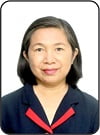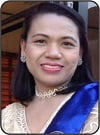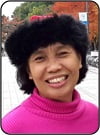Indigenous Utilization of Resources and Conservation Practices of the Agta of Lupigue, Ilagan City, Isabela, Philippines
Abstract
ABSTRACT: Indigenous environmental management for sustainability is about the particularity of place, cultural, and spiritual values woven through knowledge of wildlife, forest trees, water, and land. Indigenous values associated with natural resources utilization and conservation might defy some scientific standards as they emphasize symbolic values to indigenous identity, customary law, and environmental philosophy. Symbolic values strengthen belief to indigenous knowledge, which are priceless and are handed down from one generation to the next through apprenticeship or direct participation. Beliefs and knowledge systems require an indigenous perspective to be relevant for use, so databases from every indigenous peoples group need to be appropriately designed for specific users. This study aimed to ascertain how the Agta of Lupigue, Ilagan City, Isabela in the Philippines utilize and conserve the natural resources in their domain. The ethnographic research was used to realize the purpose of this study. In-depth interview and participant observation were rendered to gather information. A review of documentary materials and readings was done to enrich the researchers’ knowledge of the culture, knowledge systems, and practices of the respondents. Findings revealed that the Agta are consistent with their home-grown ways of using, protecting, and managing sustainably the ancestral lands and resources that have prevailed upon their identity as a people, despite the onset of science and technology. Indigenous environmental management for sustainability could be achieved by recognizing and understanding indigenous knowledge of natural resources.
KEY WORDS: Indigenous Peoples; Environmental Management; Cultural and Spiritual Values; Sustainability; Indigenous Knowledge of Natural Resources.



About the Authors: Marites C. Geronimo is a Lecturer at the PNU (Philippine Normal University) in Visayas, Cabahug St., Cadiz City, Negros Occidental, Philippines. Marie Grace S. Cabansag and Agnes S. Reyes are the Lecturers at the PNU (Philippine Normal University) in North Luzon, Aurora, Alicia, Isabela, Philippines. Corresponding authors is: cardona.rs@pnu.edu.ph
How to cite this article? Geronimo, Marites C., Marie Grace S. Cabansag & Agnes S. Reyes. (2016). “Indigenous Utilization of Resources and Conservation Practices of the Agta of Lupigue, Ilagan City, Isabela, Philippines” in EDUCARE: International Journal for Educational Studies, Vol.8(2) February, pp.115-128. Bandung, Indonesia: Minda Masagi Press and UMP Purwokerto, ISSN 1979-7877.
Chronicle of the article: Accepted (January 12, 2016); Revised (January 22, 2016); and Published (February 28, 2016).
Keywords
Full Text:
PDFReferences
A. Co, Edna Estifania et al. [eds]. (2012). Nature Conservation in the Footsteps of Our Ancestors: Proceedings of the First National Conference on Indigenous Community Conserved Areas (ICCAs) in the Philippines. Manila, Philippines: UNDP [United Nations Development Programme]. Available online also at: https://newcapp.files.wordpress.com/2014/01/icca-conference.pdf [accessed in Manila, Philippines: August 16, 2015].
Bengwayan, M. (2007). “Filipino ‘Agta’ Aborigines Threatened with Extinction: The Agtas are at the Bottom of the Complex Philippine Social Hierarchy”. Available online at: http://www.bt.com.bn/focus/2007/10/28/filipino_agta_aborigines_threatened_with_extinction [accessed in Manila, Philippines: August 16, 2015].
Calzado, C. (2014). “Meet the Agtas”. Available online at: http://communitycarbonpool.info/en/news/current/11-meet-the agtas?highlight=WyJtZWV0IiwidGhlIiwiJ3RoZSIsImFndGFzIiwibWVldCB0aGUiLCJtZWV0IHRoZSBhZ3RhcyIsInRoZSBhZ3RhcyJd [accessed in Manila, Philippines: December 18, 2015].
CBD [Convention on Biological Diversity]. (2014). “Traditional Knowledge and the Convention on Biological Diversity”. Available online at: http://www.cbd.int/traditional/intro.shtml [accessed in Manila, Philippines: November 11, 2015].
CP [Congress of the Philippines]. (1997a). Republic Act No.8371: An Act to Recognize, Protect, and Promote the Right of Indigenous Cultural Communities/Indigenous Peoples, Creating a National Commission on Indigenous Peoples, Establishing Implementing Mechanisms, Appropriating Funds therefore, and for Other Purposes. Metro Manila: Third Regular Session, Tenth Congress, Congress of the Philippines, on 28 July.
CP [Congress of the Philippines]. (1997b). “Republic Act No.8371, Chapter III, Sec. 7b: Right to Develop Lands and Natural Resources”. Print/Documents Owned by Authors.
CSO [Cultural Survival Organization]. (2014). “Who are Indigenous Peoples?”. Available online at: http://www.culturalsurvival.org/who-are-indigenous-peoples [accessed in Manila, Philippines: December 18, 2015].
Ember, C. & M. Ember. (1992). Anthropology: A Brief Introduction. Englewood Cliffs, New Jersey: Prentice-Hall, Inc.
Estioko-Griffin, A.A. & P.B. Griffin. (1985). “Women Hunters: The Implications for Pleistocene Prehistory and Contemporary Ethnography” in M.J. Goodman [ed]. Women in Asia and the Pacific: Towards an East-West Dialogue. Honolulu: University of Hawaii Press, pp.61-81.
Fraenkel, J.R. & N.E. Wallen. (2006). How to Design and Evaluate Research in Education. New York: McGraw-Hill, sixth edition.
Geronimo, Marites C., Marie Grace S. Cabansag & Agnes S. Reyes. (2016). “Beliefs and Practices on Utilization and Conservation of Resources among the Agay of North Sierra Madre Mountain System, Philippines” in Asia Pacific Journal of Research, Vol.1(1). Available online also at: http://apjor.com/downloads/2705201613.pdf [accessed in Manila, Philippines: January 30, 2016].
GI [Grolier International]. (1995). “Grolier Encyclopedia of Knowledge, Number 198”. Print/Documents Owned by Authors.
HMDBMP [Highland Mapping Development and Biodiversity Management Project]. (2006). Indigenous Knowledge, Customary Use of Natural Resources and Sustainable Biodiversity Management: Case Study of Hmong and Karen Communities in Thailand. Bangkok: IMPECT [Inter-Mountain Peoples’ Education and Culture in Thailand] Association. Available online also at: http://www.forestpeoples.org/sites/fpp/files/publication/2010/08/10cthailandimpectjun06eng.pdf [accessed in Manila, Philippines: November 11, 2015].
IFAD [International Fund for Agricultural Development]. (2014). “Indigenous Peoples, 1995-2014: Valuing, Respecting, and Supporting Diversity”. Available online at: http://www.ifad.org/english/indigenous/index_full.htm [accessed in Manila, Philippines: December 18, 2015].
Interview with Respondent A, an Agta Tribe, in Ilagan City, Isabela, Philippines, on 15 January 2015.
Interview with Respondent B, an Agta Tribe, in Ilagan City, Isabela, Philippines, on 20 January 2015.
Interview with Respondent C, an Agta Tribe, in Ilagan City, Isabela, Philippines, on 25 January 2015.
Interview with Respondent D, an Agta Tribe, in Ilagan City, Isabela, Philippines, on 30 January 2015.
Interview with Respondent E, an Agta Tribe, in Ilagan City, Isabela, Philippines, on 5 February 2015.
Interview with Respondent F, an Agta Tribe, in Ilagan City, Isabela, Philippines, on 10 February 2015.
Interview with Respondent G, an Agta Tribe, in Ilagan City, Isabela, Philippines, on 15 February 2015.
Interview with Respondent H, an Agta Tribe, in Ilagan City, Isabela, Philippines, on 20 February 2015.
Malate, Rosaly. (2014). “The Role of the Dayak People of Indonesia and the Philippines’ Menuvù Tribe of the Keretungan Mountain in Ecological Conservation: The Natural and Indispensable Partners” in Jurnal Kajian Wilayah, Vol.5, No.2, pp.217-231. Available online also at: file:///C:/Users/acer/Downloads/263-633-1-SM.pdf [accessed in Manila, Philippines: December 18, 2015].
Nanda, S. & R. Warms. (2002). Cultural Anthropology. Belmont, CA: Wadsworth/Thomson Learning, Inc., seventh edition.
NCIP [National Commission on Indigenous People]. (2012a). “NCIP Administrative Order No.2, Series of 2012, Article 1, Sec. 3e, on Sustainable Development”. Print/Documents Owned by Authors.
NCIP [National Commission on Indigenous People]. (2012b). “NCIP Administrative Order No.2, Series of 2012: The General Guidelines on the Confirmation of Indigenous Political Structures and the Registration of Indigenous Peoples’ Organizations”. Print/Documents Owned by Authors.
Ocampo, R. & R. Ocampo. (2014). “The Economic Life of the Negritos of Luna, Apayao” in Asia Pacific Journal of Multidisciplinary Research, 2(1). Available online also at: http://www.ejournals.ph/index.php?journal=APJMR&page=article&op=view&path%5B%5D=7778&path%5B%5D=8106 [accessed in Manila, Philippines: 22 December 2015].
Painemilla, Walker K. et al. [eds]. (2010). Indigenous Peoples and Conservation: From Rights to Resource Management. Arlington, VA: Conservation International. Available online also at: http://www.conservation.org/publications/Documents/CI_ITPP_Indigenous_Peoples_and_Conservation_Rights_Resource_Management.pdf [accessed in Manila, Philippines: November 11, 2015].
Painemilla, Kristen Walker et al. [eds]. (2010). Indigenous Peoples and Conservation: From Rights to Resource Management. Arlington, VA: Conservation International. Available online also at: http://www.conservation.org/publications/Documents/CI_ITPP_Indigenous_Peoples_and_Conservation_Rights_Resource_Management.pdf [accessed in Manila, Philippines: November 11, 2015].
Peoples, J. & G. Bailey. (1997). Humanity: An Introduction to Cultural Anthropology. Belmont, CA: Wadsworth Publishing Company, fourth edition.
Phillips, Adrian [ed]. (1998). Economic Values of Protected Areas: Guidelines for Protected Area Managers. Gland, Switzerland and Cambridge, UK [United Kingdoms]: IUCNNR [International Union for the Conservation of Nature and Natural Resources]. Available online also at: http://cmsdata.iucn.org/downloads/pag_002.pdf [accessed in Manila, Philippines: December 18, 2015].
Pinoy, Global. (2014). “Philippine Tribes: Agta. Posted by Carrie B. Yan on April 16, 2012”. Available online at: http://www.globalpinoy.com [accessed in Manila, Philippines: December 18, 2015].
Posey, Darrell Addison et al. [eds]. (1999). Cultural and Spiritual Values of Biodiversity. Nairobi, Kenya: UNEP [United Nations Environment Programme]. Available online also at: http://www.unep.org/pdf/Cultural_Spiritual_thebible.pdf [accessed in Manila, Philippines: December 18, 2015].
Reyes, L. (2012). “REDD+ in the Sierra Madre Mountains of the Philippines”. Available online at: http://communitycarbonpool.info/en/news/2012/61-redd-in-the-sierra-madre-mountains-of-the-philippines [accessed in Manila, Philippines: December 18, 2015].
Russell, Diane et al. [eds]. (2015). Biodiversity and Development Handbook. Washington DC: USAID [United States Agency for International Development]. Available online also at: file:///C:/Users/acer/Downloads/pa00kkws.pdf [accessed in Manila, Philippines: December 22, 2015].
Steinberg, D.J. (2009). Republic of the Philippines. Microsoft Encarta Redmond, WA: Microsoft Corporation.
Thotse, Mahunele. (2014). “Constructing a Collective Memory: Monuments Commemorating Warrior Kings in Limpopo Province, South Africa”. Unpublished Doctoral Thesis. Pretoria, South Africa: Faculty of Humanities, University of Pretoria. Available online also at: http://repository.up.ac.za/xmlui/bitstream/handle/2263/50805/Thotse_Constructing_2015.pdf?sequence=1&isAllowed=y [accessed in Manila, Philippines: December 22, 2015].
Tuyor, Josefo B. et al. (2007). Indigenous Peoples Rights Act: Legal and Institutional Frameworks, Implementation and Challenges in the Philippines. Discussion Papers, East Asia and Pacific Region, Social Development, Rural Development, Natural Resources, and Environment Sectors. Washington DC: WB [World Bank].
UNCED [United Nations Conference on Environment & Development]. (1992). Agenda 21: Recognizing and Strengthening the Role of Indigenous People and Their Communities. Rio de Janeiro, Brazil: United Nations Conference on Environment & Development, 3 to 14 June. Available online also at: https://sustainabledevelopment.un.org/content/documents/Agenda21.pdf [accessed in Manila, Philippines: December 22, 2015].
UNPFII [United Nations Permanent Forum on Indigenous Issues]. (2014). “Indigenous Peoples, Indigenous Voices (1)”. Available online at: http://www.un.org/esa/socdev/unpfii/documents/5session_factsheet1.pdf [accessed in Manila, Philippines: December 18, 2015].
EDUCARE: International Journal for Educational Studies. Ciptaan disebarluaskan di bawah Lisensi Creative Commons Atribusi-BerbagiSerupa 4.0 Internasional
